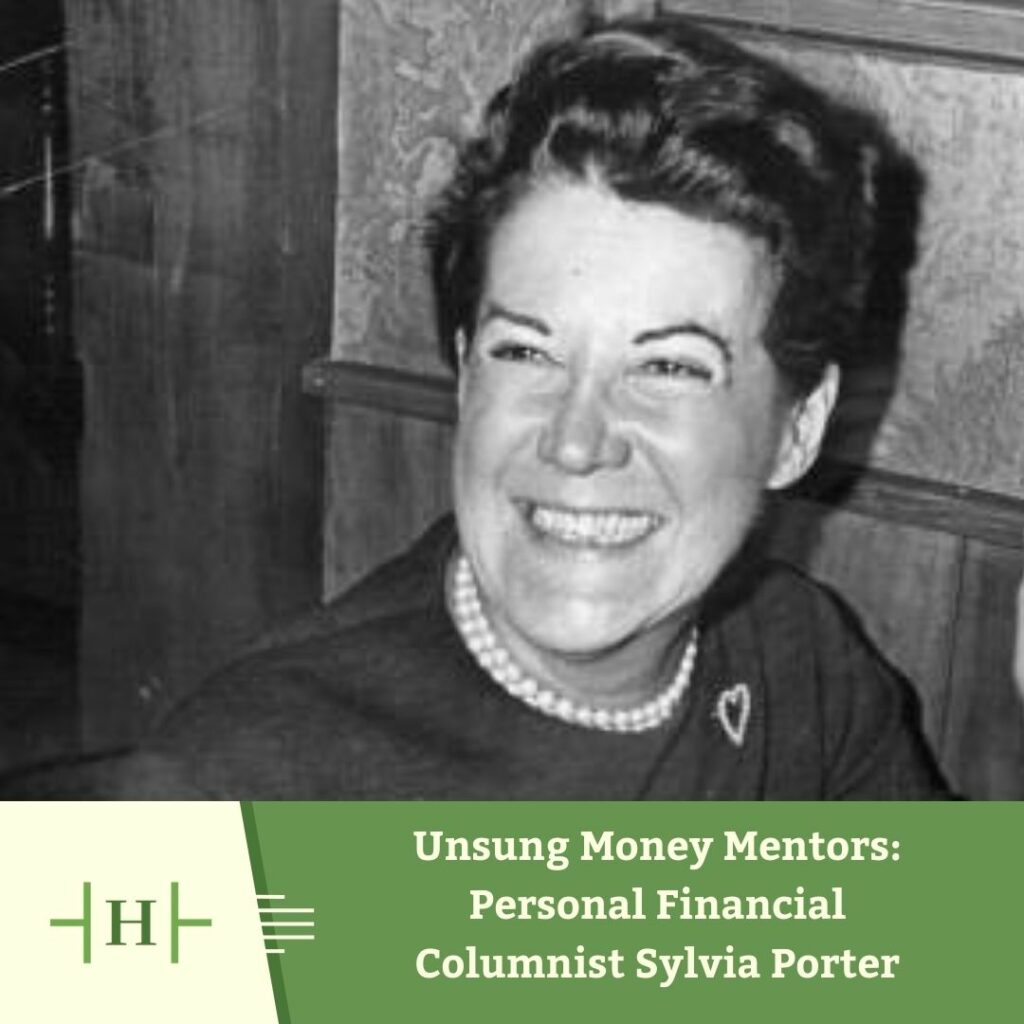September 21, 2023


In a recent piece, we offered our broad take on “the media,” and how to identify islands of investment insights across the oceans of daily news. Next, we’ll zoom in on America’s first personal financial columnist Sylvia Porter (1913–1991), and the remarkable impact she made on the global financial press.
As we covered earlier, today’s challenge isn’t finding enough financial commentary; it’s sifting through it all to get to the considerably smaller volume of good stuff.
That hasn’t always been the case. The Wall Street Journal subscribers could track daily Dow Jones Industrial Average stock returns as early as the 1890s. But until closer to the 1970s, there was scant commentary aimed at enhancing everyday Americans’ financial literacy and investment acumen.
Not until Sylvia Porter came along, and invented the personal finance column.
Porter launched her career at the New York Post in 1935, by agreeing to take on a beat of little interest to other reporters: the bond markets. (She also initially concealed her gender by publishing under the byline S.F. Porter.)
You might not think reporting on the price of bonds would lead to a daily column reaching 40 million readers across 350 newspapers at its 1979 peak. But that’s exactly what happened. As Porter biographer Tracy Lucht described:
“[W]riting about bonds gave Porter a professional edge by conditioning her to think like an expert and write like a journalist. Bonds were difficult to explain to the average reader, and taking on this challenge trained Porter to break down complex subjects into their simplest, most precise terms. Porter’s specialization in bonds also gave her a broad, international perspective on the economy. By learning why governments and corporations indebted themselves, and to whom, Porter learned how the pieces of the global economic puzzle fit together.”
A lesser journalist with fewer ambitions might have kept her expertise to herself. Porter stood apart by being among the first in her profession to stake her career on aggressively combating what she referred to as financial “bafflegab.”
“I feel that I am conducting what almost amounts to a crusade to try to put these economic developments that affect everything we do into language which the average man and woman can not only understand, but will want to read because they are really interested.” — Sylvia Porter
The public must have liked what they read. By 1949, her column was nationally syndicated, under her full name. (As the Post’s executive editor declared, “[T]he time has come for us to make capital of the fact that S. F. Porter is a woman writing on financial subjects, rather than trying to disguise Sylvia as an old man with a long white beard.”) In a 1951 column, she introduced the term “personal finance,” and she appeared on the cover of Time in 1960. As Lucht wrote, “By the end of her career, Sylvia Porter’s name was so trusted in financial matters that esteemed investment authorities would plead for her endorsement.”
In 1975, Porter published her eponymous, best-selling book: “Sylvia Porter’s Money Book: How to Earn It, Spend It, Save It, Invest It, Borrow It—And Use It to Better Your Life.” Lucht contends, the book “created a new genre in journalism and book publishing.”
The book’s plainspoken title has withstood the test of time. Our hubris may lead us to believe more recent generations invented the idea of combining financial planning with personal values and quality of life concerns. Clearly, Porter scooped us on that, by about 50 years.
The apex of Porter’s career also pairs well with the 1976 arrival of “Bogle’s Folly,” aka, the index fund, which made it considerably cheaper and easier for the average individual to invest in broad market returns. Chicken or egg: Did Porter’s influence contribute to the development of new, more accessible investment vehicles? Or was the increased interest in personal finance spurred on by the arrival of the improved funds? Probably a bit of both.
Why is Porter’s name less familiar to us than those of some of her contemporaries, such as John Bogle, Benjamin Graham, and Warren Buffett? We’ll leave you to draw your own conclusions. But while her name may no longer be in the headlines, her influence still haunts the same, thanks to the high bar she set for the professional journalists who have followed in her footsteps.
In particular, in the 1990s–2000s, a few trailblazing financial columnists began to explore what we now describe as evidence-based, or factor investing. This time, their work paired with Dimensional Fund Advisors’ launch of a science-based approach to efficiently capturing sources of expected returns—an approach many other fund families have since embraced as well.
From that era, the following names come to mind:
Fast forward to today. Even as the lines have blurred between the professional and social media, a modest number of professional journalists remain, hired by global media outlets to publish deeper, more thoughtful reflections on finance and investing. They’re the ones helping their audiences look past the inconstant emotions of the day (Quinn’s “financial pornography”). Instead, they direct readers to the sensible, time-tested advice that has served families well around the world and across decades of financial highs and lows.
Currently, they include names such as:
What’s next? We hope Porter’s legacy will continue to sustain today’s finest personal financial columnists, and that they in turn will inspire the next generation of those committed to quashing the never-ending flow of financial bafflegab. There’s always plenty of it out there to combat.
On that note, if we can help you make sense of your own money matters, please be in touch with us today. We stand ready to serve as your financial translator.